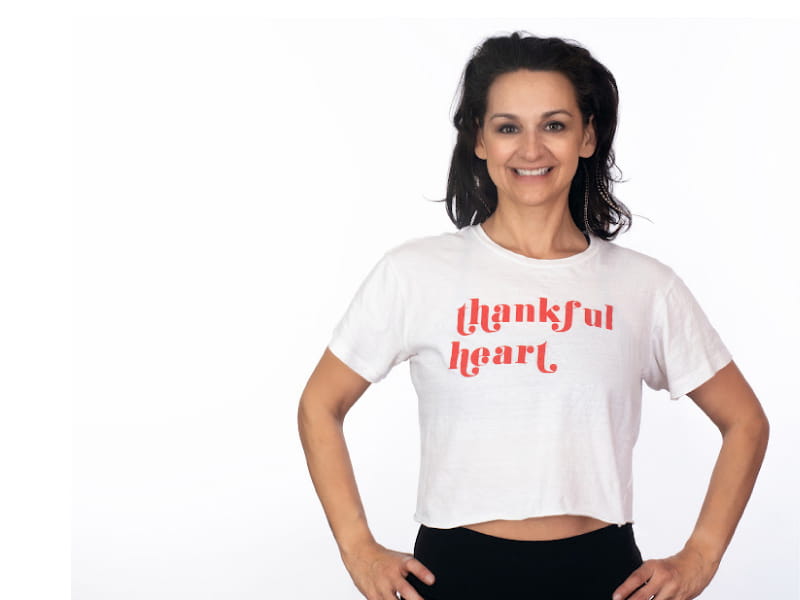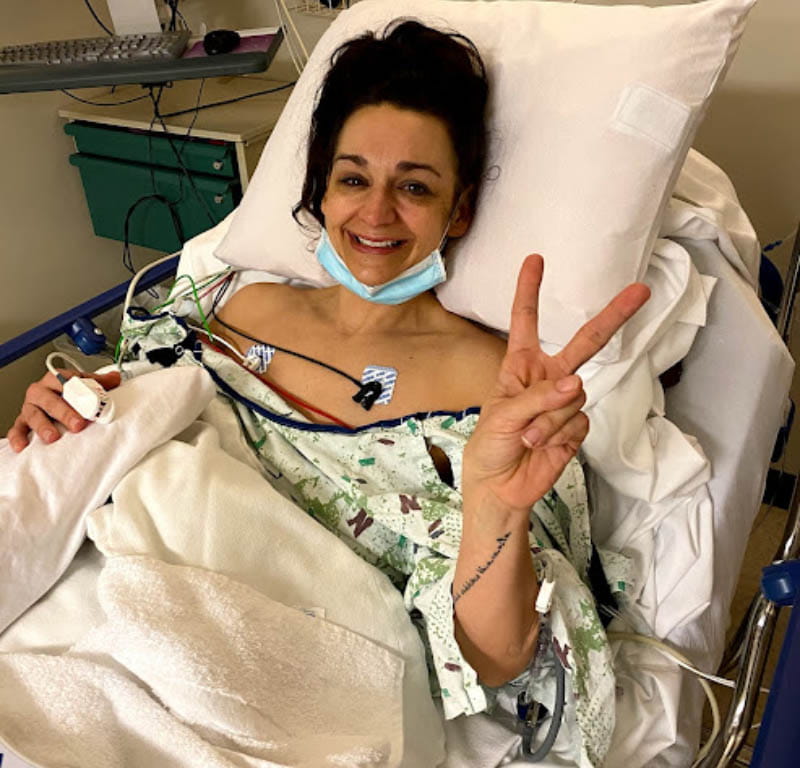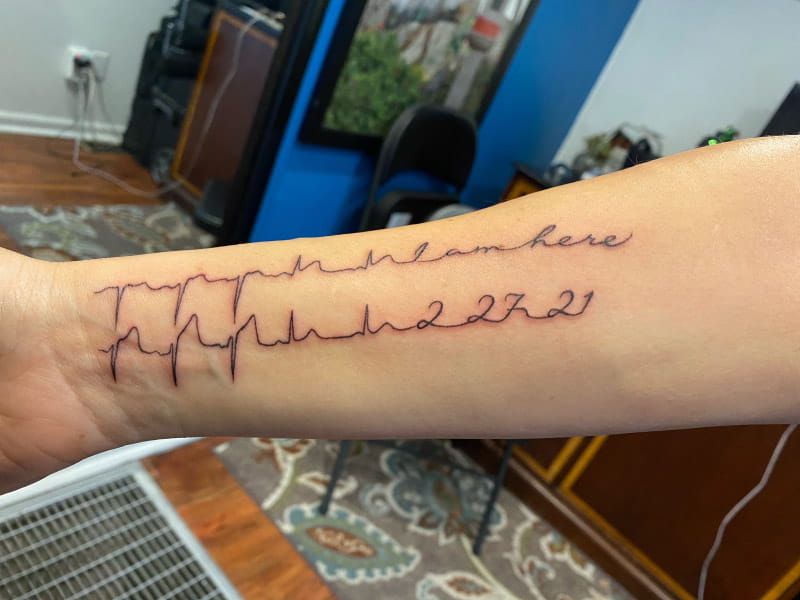While teaching a fitness class, she had a massive heart attack
By Stefani Kopenec, American Heart Association News

Ratona Harr was 20 minutes into leading a morning ride at a cycling studio when she felt something like a switch flip, triggering pressure in her chest. It bothered the 44-year-old mother of two enough that she got off the bike and taught the remaining 25 minutes of the class while standing.
About two hours later, she returned to teach another spin class while again standing next to her bike. A client suggested she may have heartburn. Thinking that maybe her breakfast of coffee and an orange could be to blame, Harr bought an antacid on her way home.
That evening, still feeling the "weird sensation" in her chest, Harr nonetheless led a workout class at the fitness and yoga studio she owns in Florence, Kentucky. She told her clients she wasn't feeling 100% so she wouldn't be doing the exercises with them.
Because she'd never had any heart problems, Harr never considered going to a doctor or a hospital. This was February 2021 and her focus was more on maintaining her class schedule because the pandemic had taken a financial toll on her business.
The next two days, Harr didn't feel great but couldn't put her finger on the problem. She got a massage in hopes that would help; it didn't. The following day, she was teaching a cardio and strength class at her studio when the pain returned. Only more intense.
"On a scale of 1 to 10, it was like a 15," Harr said.
She broke into a pouring sweat. Her left arm went numb. She was afraid enough that she walked over to one of the participants – her friend Catherine Fauls, a physical therapist – and asked Fauls to keep an eye on her.
Fauls knew Harr had a chronic back issue that she rarely complained about, so if she was worrying about something, it must be serious. Fauls told her to stop the class. Fauls then asked if there was a doctor or nurse present.
Two nurses came forward. They checked her pulse, which was racing. At this point, Harr could hardly breath. Meanwhile, a friend called 911, then phoned Harr's husband. The helpers hugged Harr in hopes of calming her until the ambulance arrived.
Paramedics did an electrocardiogram and told Harr she was having a heart attack.
At the hospital, the medical staff took another reading of her heart. She was in such bad shape – so lucky to be alive – that Harr recalls an emergency room doctor saying, "I can't even believe you're here."
Harr was taken to the cardiac catheterization lab, where doctors examined the internal workings of her heart. The cardiologist found 100% blockage of her left anterior descending artery, the heart's largest artery and where nearly half the heart's blood is supposed to flow. Full blockages there are frequently deadly. He inserted two stents to restore blood flow.
Hours later, Fauls' phone rang. Answering, she heard: "I'm alive!" Hearing those words from Harr caused Fauls to burst into tears.
Among the reasons Harr survived was the quick response: The 911 call occurred at 8:56 a.m.; she headed to the cath lab by 9:33 a.m.

Still, the damage to her heart was extensive. She was in heart failure; her heart was no longer able to supply adequate blood flow to the rest of her body. She left the hospital wearing a defibrillator vest that would restart her heart in case it stopped.
At the start of her recovery, Harr – who previously rarely even took a vitamin – was taking 11 medications. Three times a week, she went to cardiac rehabilitation, where the staff monitored her heart while she exercised.
"My therapist would always say, 'We just want to remind you, even though you're the youngest and you think you're the fittest in here, you're actually the sickest. You're the only one in the life vest,'" Harr said.
The fitness instructor of nearly 20 years stepped back from teaching for six months. Then, with her doctor's OK, she gradually ramped things up.
"I had a lot of anxiety and just a little bit of trauma coming back and teaching, because I almost lost my life teaching. And just fear of, I could just have a heart attack and die, and die in front of a group of people," she said.
Last year, Harr was in a yoga class when her heart rate spiked. She was diagnosed with tachycardia, or a fast heart rate, and underwent a procedure that blocked the pathway causing the abnormal heart rhythm.
In September, she had another cardiac event, again while working out.
Harr was leading a cycling class when she passed out and fell off her bike. She was unconscious for roughly 60 to 90 seconds. The problem was caused by an irregular heart rhythm called ventricular fibrillation.
Harr received an implantable cardioverter defibrillator, or ICD. It's a machine placed in the chest to monitor the heart's rhythm; if it detects a problem, it can shock the heart back into a normal rhythm.
Now 47, Harr is trying to figure out the best, safest way forward in her life. She's not sure what that will look like.
One thing she's learned, though, is how advanced medicine and technology are when it comes to treating heart problems.
"There's so much amazing technology and preventative measures," she said. "You can still live a very vibrant life."

Stories From the Heart chronicles the inspiring journeys of heart disease and stroke survivors, caregivers and advocates.





